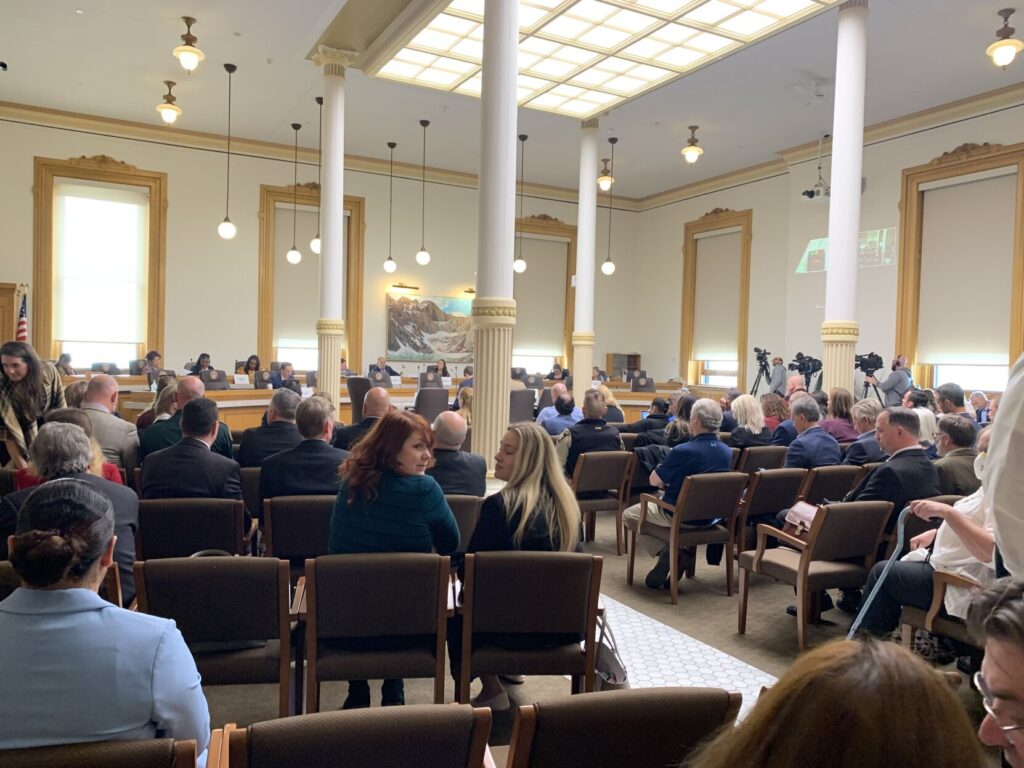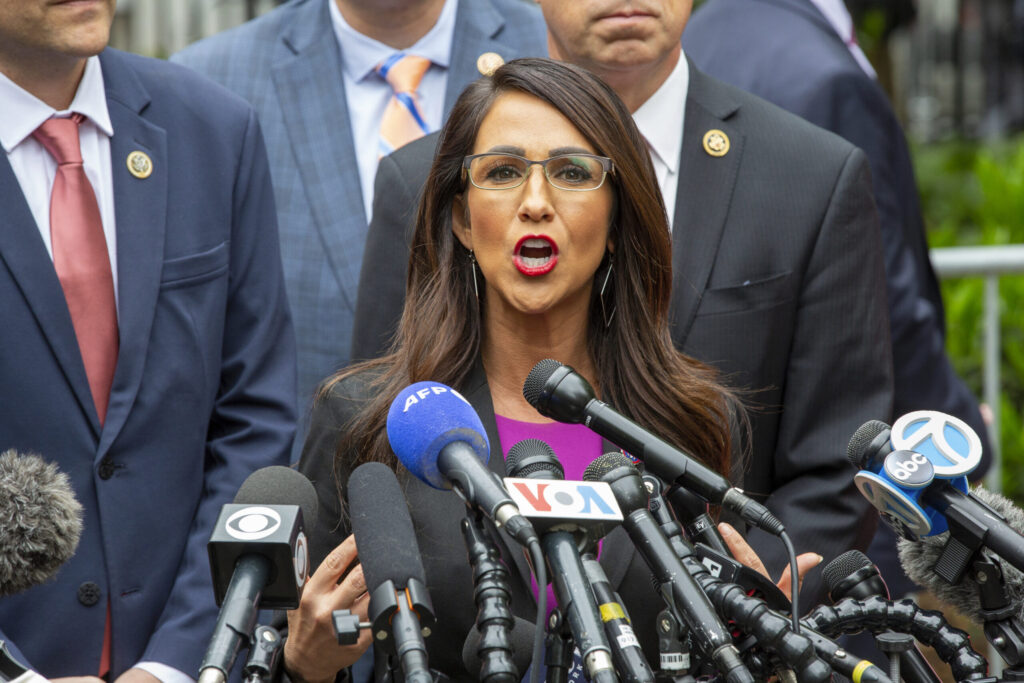Denver auditor alleges police oversight body lacks transparency; agency disagrees

The civilian agency that oversees the Denver Police Department and Denver Sheriff Department and makes recommendations to improve their policies and practices has been limited by conflicting mandates and a perceived conflict of interest that affects its ability to complete its work, according to a report from the city auditor.
The Office of the Independent Monitor pushed back at the findings, though it ultimately agreed to implement the recommendations from the office of Denver Auditor Timothy O’Brien.
In a statement provided to The Denver Gazette, the Office of the Independent Monitor called its work the “gold standard model” for law enforcement oversight, according to a spokesperson.
First created in 2004, the independent monitor processes complaints about DPD and DSD personnel, monitors investigations into those complaints and makes recommendations based on the findings and discipline associated on the cases, according to Denver’s website. The office publishes an annual report every spring on its work from the previous year.
Questions about transparency
A key finding in the auditor’s report was that some of the office’s practices present a potential conflict of interest with the City Attorney’s Office, one that could create a perceived lack of transparency within the office.
The auditor found that, despite not explicitly required to in the city charter, the office provides its reports to other city agencies for review and input before publishing, raising issues with the independence and transparency of its work.
The office’s internal procedures require its annual reports to be sent to the City Attorney’s Office and then to the Mayor’s Office and Public Safety for feedback and review before publishing, according to the report.
The office pushed back, calling the auditor’s critique of its transparency as “misleading, inaccurate and sensational reporting.”
“The OIM understands the audit’s concerns regarding a perceived conflict with the City Attorney’s Office (CAO), however it may not disclose privileged information in its reports that conflicts with the city ordinance as interpreted by the CAO, and is subject to legal jeopardy if it does,” the monitor’s office said in its statement.
The monitor added that it agreed to reevaluate whether the policy of sending reports to the City Attorney’s Office for review is required and would document its considerations and conclusions.
“I think the main conflict is that the City Attorney’s Office is focused on limiting liability for the city, and that is not the mission of the Office of the Independent Monitor,” said Julia Richman, who chairs the Citizen Oversight Board. The body consists of nine community members who oversee the monitor’s office. “Because the City Attorney is the lawyer for the monitor’s office, it does create conflicts because the City Attorney also works for the mayor.”
The auditor noted that the city charter allows for the monitor’s office to retain its own independent counsel for legal advice, instead of the City Attorney’s Office.
While that idea is nice in theory, it would be difficult to implement in practice, Richman said.
“Is there funding for spending money on outside lawyers right now? There isn’t,” Richman said. “Practically speaking, it’s a good thought without the financial backing to be able to support it.”
Conflicting mandates
The auditor also concluded that the monitor’s office has conflicting mandates woven into the bedrock of its established jurisdiction, as detailed in the Denver City Charter, that curtail its ability to fully fulfill its duties and hold the law enforcement agencies accountable.
City Ordinance Article XVIII Sections 2-375(a) and (c) require the office to publish public reports every spring that detail trends regarding complaints, investigations and discipline of uniformed personnel without providing identifying information.
Additionally, the office is required to make recommendations to the directors of the safety agencies regarding the sufficiency of their investigations, the appropriateness of their discipline and any proposed changes to polices, rules and training.
But the ordinance’s very next section limits exactly how much information the office is able to publish, the auditor said.
Section 2-376(c) notes that everyone who participates in any investigative or disciplinary procedures falls under the city’s deliberative process privilege, which makes confidential any deliberations or recommendations that come about from those procedures.
Because of this deliberative process, the monitor’s office does not publicly share recommendations made during its investigation or discipline reviews, despite its requirement in the city charter to do so, the auditor said. Furthermore, the auditor himself was unable to access them due to that privilege, making it difficult to truly evaluate the impact of the monitor’s work, the report said.
In its statement, the monitor’s office said it disagrees with the basis for the auditor’s recommendation for it to review the ordinance and see if there was any additional information it could publicly report, insisting it has and will continue to operate in compliance with the ordinance. The monitor nonetheless agreed to comply with the auditor’s directive.
“The OIM is always looking for new ways to publish concerns within the ordinance mandates and agreed to reevaluate the city charter and city ordinance requirements,” the monitor said.
Richman acknowledged the tension.
“The complexity of most of what (the OIM) is doing is Human Resource deliberations, which create information sharing constraints,” Richman said. “On the one hand, you have this body that is intended to provide more public accountability, and on the other hand, the topics they are covering are typically those that are personnel in nature. That creates the tension that the auditor identified.”
The privilege also affected the office’s ability to publish recommendations for improving the policies and practices of both law enforcement agencies in accordance with the city charter, the auditor’s report said. Public reports reviewed by the auditor from 2018 through 2024 found limited discussion of those recommendations.
After the auditor requested a list of policy and practice reviews conducted from January 2018 through April 2025, the office provided 44 such reviews.
Only seven of them, or 16%, were discussed in public reports.
Timeliness, record-keeping and a strategic plan
Three other findings by the auditor included a lack of comprehensive reporting by the office on timeliness of misconduct investigations, a lack of differentiation between mandatory and discretionary reviews and no formalized strategic plan.
Regarding timeliness, the auditor found that the monitor’s office did not include its own review times spent on case intake, investigation or discipline review when documenting the different portions of the discipline process.
Despite the lack of documentation, the report noted that the monitor’s office forwarded 97% of its received complaints to the respective departments within three days and that it completed its final investigation reviews for 96% of cases within seven days, meeting goals for both.
The auditor also highlighted that the office did not differentiate between mandatory and discretionary case reviews, but noted that its practice of reviewing all misconduct cases exceeded its obligation to review only mandatory ones.
From 2022 through 2024, the office increased the number of cases it actively monitored from 100 to 227, according to the report.
The office is only budgeted for five deputy monitor positions, though it added a sixth between 2023 and early 2024 before budget cuts again reduced its staffing to five.
The final finding from the auditor was that the monitor’s office does not have a formalized strategic plan outlining its short- and long-term goals and determining a mission statement with indicators to concretely monitor and determine progress toward achieving that mission.
The development of such a plan, Richman said, is something that the authority has been thinking about for some time now.
“The COB published its strategic plan earlier this year and one of the items in our strategic plan is to help facilitate the alignment of our strategy with the OIM strategy,” Richman said. “We are two separate organizations but we do feel like there are elements that we should be well aligned on.”
In its statement, the office stressed that its small size makes it more reliant on the governing charter and ordinance provisions for its goals and directives, but agreed to convene a working group to develop a strategic plan.
Reviewing policies
Despite its critiques of the auditor’s findings, the monitor’s office agreed to all the recommendations made in the report.
The office agreed to implement its review of whether it can publicly share recommendations for investigations, its reevaluation of the policy dictating it to submit reports to the City Attorney’s Office prior to publishing, and its distinguishment of mandatory and discretionary case reviews by March 31, 2026.
The office also agreed to conduct a cohesive analysis of the review process and include it in its annual report by March 15, 2026.
Finally, the development of the strategic plan will be completed by June 30, 2026 and implemented by Sept. 30, 2026.
Richman acknowledged that many of the issues found in the report would be solved by better staffing in the office, though noted that objective would be difficult to accomplish given the city’s current budget situation.
“There’s nothing in here that feels like a silver bullet or a total surprise,” Richman said. “In the end, what it feels like to us is continued improvement on a system that’s really complicated with many stakeholders.”



















